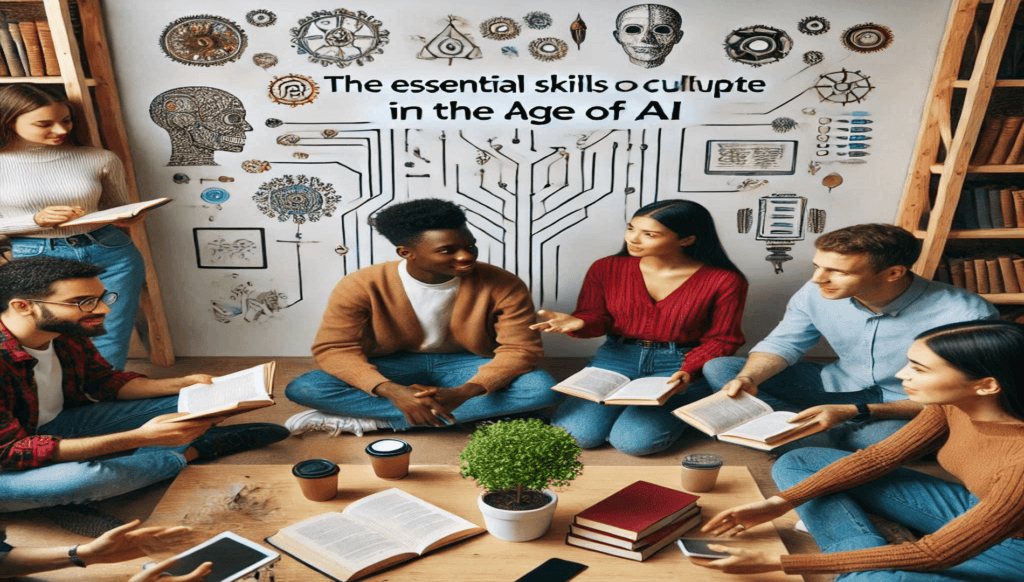
The world of talent acquisition is undergoing a profound transformation. Gone are the days when a recruiter’s role was solely defined by sourcing candidates and scheduling interviews. In 2025, the most successful recruiters will be those who can adapt, innovate, and bring diverse skills to the table. The traditional, narrowly defined recruitment role is becoming increasingly inadequate in today’s complex and rapidly evolving business landscape. This discussion will explore the emergence of the “multiversed recruiter”, a professional who embodies a wide range of capabilities, blending traditional HR skills with expertise in data analytics, AI, and strategic business partnering. This evolution isn’t merely a trend; it’s a fundamental shift that is redefining what it means to excel in talent acquisition.
The Limitations of Traditional Recruitment for a Multiversed Recruiter
Traditional recruitment models often focus on a narrow set of tasks such as:
- Posting job openings
- Reviewing resumes
- Conducting initial phone screens
- Coordinating interviews
These tasks, while necessary, are becoming increasingly automated with the rise of AI. Recruiters who rely solely on these skills will find themselves struggling to stay relevant in a market that demands more strategic and nuanced approaches to talent acquisition. All the recent research emphasizes that AI is automating many routine tasks, forcing recruiters to move beyond basic functions and focus on areas that require human expertise. This shift necessitates a more versatile approach to recruitment, where professionals can blend technological proficiency with critical human skills and strategic thinking. The traditional “order-taker” role is no longer sufficient; today’s organizations need recruiters who can act as strategic advisors and business partners.
Who is a Multiversed Recruiter
A ” multiversed recruiter” refers to a talent acquisition professional who possesses a diverse range of skills and expertise that extend beyond traditional recruitment functions. This concept reflects the evolving demands of the recruitment landscape, where recruiters need to be adaptable, strategic, and tech-savvy.
In essence, a multiversed recruiter is a well-rounded professional who combines traditional recruitment skills with expertise in technology, data analysis, strategy, and human interaction. They are essential in today’s dynamic and competitive talent market, where adaptability and a broad range of skills are crucial for success. They must be more than just recruiters; they must be business leaders
The Need for Skills Beyond Traditional HR for a Multiversed Recruiter
The modern recruiter needs to be more than a matchmaker of resumes and open positions. The multi-versed recruiter must be adept in a variety of areas, including:
Data Analytics:
Recruiters need to understand and leverage data to make informed hiring decisions. This includes the ability to interpret talent market data, track key recruitment metrics, and use analytics to improve the effectiveness of recruitment strategies. Being able to tell stories with data, converting complex datasets into actionable insights, is also becoming a key skill.
Artificial Intelligence (AI):
With the rise of AI tools in recruitment, recruiters need to understand how these technologies work, and how they can be used to enhance their workflows. This involves using AI for tasks like candidate sourcing, resume screening, and even initial candidate assessments. They must also develop skills to personalize content generated by AI tools to maintain authenticity and connection with candidates.
Cybersecurity:
As companies manage sensitive candidate and employee data, recruiters with a baseline understanding of data protection and cybersecurity will be valuable assets. This includes understanding the risks of using ungated large language models and implementing policies for the responsible use of AI.
Business Acumen:
Recruiters need to understand their organization’s business goals, and align their recruitment strategies accordingly. This involves understanding how their work impacts the bottom line and proactively addressing the needs of hiring managers, rather than simply reacting to requests.
Marketing and Branding:
Recruiters also need to act as brand ambassadors for their companies. This involves crafting compelling employer brand narratives, leveraging social media, and engaging with candidates in a personalized and authentic manner.
Digital Proficiency:
Today’s recruiters must be comfortable using various recruiting software, browsers, extensions, and AI tools.
Soft Skills:
The ability to build strong relationships with candidates, communicate effectively, and assess soft skills like adaptability and communication is crucial.
The Impact of AI on Human Skills for a Multiversed Recruiter
The increasing presence of AI in recruitment is not eliminating the need for human skills; rather, it’s highlighting them. As AI takes over many routine tasks, recruiters need to focus on areas where human interaction is essential:
Personalization:
In an age of AI-generated content, recruiters need to focus on personalizing interactions with candidates to stand out and build genuine connections.
Candidate Experience:
Recruiters play a vital role in creating a positive candidate experience, acting as the face of their organization. They need empathy, emotional intelligence, and the ability to make candidates feel valued throughout the hiring process.
Authenticity:
Recruiters need to communicate with candidates authentically, ensuring that the recruitment process is genuine and transparent.
Human Touch:
While AI can streamline processes, recruiters must ensure that human interaction remains central to the recruitment process.
These are uniquely human skills that AI cannot replicate. They are the key differentiators that set great recruiters apart from merely adequate ones. As Alex Her, Head of Global Employer Brand at GoDaddy notes, recruiters need to use AI to “work smarter, not harder, yet remain authentic”.
Becoming a Strategic Partner as a Multiversed Recruiter
The multi-versed recruiter is not just a functionary; they are a strategic partner within their organization. This involves:
Understanding Business Goals:
Recruiters need to fully understand their organization’s strategic objectives and align their hiring practices accordingly. This means having in-depth conversations with hiring managers, understanding their specific needs, and anticipating future talent requirements.
Providing Market Insights:
Recruiters need to provide insights into talent market trends, such as salary benchmarks, skills shortages, and competitive landscapes. They need to leverage data to understand what top talent is looking for and how their organization can stand out.
Advising on Talent Strategy:
Recruiters should actively participate in talent strategy discussions and make recommendations based on data-driven insights. They should be able to advise on talent retention, upskilling, and internal mobility strategies. They must be able to build a talent pipeline to scale as needed.
Building Relationships:
The ability to build strong relationships with hiring managers and stakeholders is paramount. This involves trust, open communication, and a collaborative approach to recruitment.
Proactive Problem Solving:
Recruiters should not just react to hiring requests but proactively identify talent needs and potential solutions. This involves anticipating challenges and developing strategies to address them.
By functioning as strategic partners, recruiters can significantly contribute to organizational success, moving beyond merely filling positions to actively shaping the future of the workforce.
The Importance of Soft Skills for a Multiversed Recruiter
While technical skills and business acumen are essential for the multi-versed recruiter, soft skills are equally, if not more, important, especially for niche roles. These include:
Adaptability:
The ability to adapt to changing market conditions, new technologies, and evolving business needs is paramount.
Communication:
Excellent verbal and written communication skills are essential for building relationships with candidates and stakeholders.
Problem Solving:
Recruiters need to be able to think critically and creatively to solve complex challenges, such as sourcing talent for niche roles or addressing skills gaps.
Emotional Intelligence:
The ability to understand and manage their own emotions and the emotions of others is crucial for building rapport and creating a positive candidate experience.
Collaboration:
Recruiters need to collaborate effectively with other team members, hiring managers, and stakeholders to achieve shared goals.
Active Listening:
Recruiters must be able to listen attentively to the needs of candidates and hiring managers to ensure the best possible fit.
Krista Tichelaar, Head of TA EMEA at Swift, points out that there will be more emphasis on soft skills, especially for niche roles such as data engineering and machine learning. This reflects a broader recognition that soft skills are often as crucial as technical expertise in determining a candidate’s long-term success.
Emerging Roles for the Multiversed Recruiter
As the recruitment landscape evolves, new roles are emerging for the multi-versed recruiter, such as:
Sourcing Architect:
This role focuses on developing and implementing innovative sourcing strategies, leveraging data and technology to identify and attract top talent. They are experts in using AI-powered sourcing tools and identifying passive candidates.
Talent Research Partner:
This role involves conducting in-depth research into talent market trends, competitor activity, and emerging skills. They are strategic advisors to hiring managers and play a critical role in talent planning and strategy.
Employer Branding Specialist:
This role focuses on crafting compelling employer brand narratives, using data to identify areas for improvement, and creating a positive candidate experience.
Recruitment Technologist:
This role focuses on evaluating and integrating new technology solutions into the recruitment process, ensuring that recruiters have the tools they need to excel.
AI Integration Specialist:
This role involves implementing and managing AI tools within the recruitment process, ensuring that they are used ethically and effectively, and can develop custom AI solutions for recruitment.
These roles reflect the growing need for specialized expertise and the increasing complexity of the talent acquisition field. These new roles move away from basic administrative tasks to positions with higher level strategic impact and innovative focus.
Here’s What I Think: Embracing the Future of Recruitment as a Multiversed Recruiter
The Multiversed recruiter is not a fleeting trend but a fundamental shift in the landscape of talent acquisition. As technology continues to evolve and the business environment becomes more complex, recruiters must adapt and broaden their skill sets to stay ahead of the curve. The most successful recruiters in 2025 will be those who can blend traditional HR expertise with skills in data analytics, AI, business strategy, and, most importantly, human connection.
To succeed in this evolving landscape, recruiters must embrace:
- Continuous Learning: Recruiters must commit to ongoing professional development, staying up to date on the latest technologies and trends.
- Skill Diversification: Recruiters must proactively expand their skill sets, developing expertise in areas beyond traditional HR.
- Strategic Thinking: Recruiters must elevate their thinking from basic execution to strategic planning and talent advising.
- Ethical AI Implementation: Recruiters must have a solid understanding of the ethical implications of AI and how to implement AI in a responsible and inclusive way.
- Human-Centric Approach: Recruiters must prioritize the human element in recruitment, fostering authentic connections with candidates and creating positive experiences.
The rise of the Multiversed Recruiter represents an exciting opportunity for talent acquisition professionals to redefine their roles and contribute more strategically to their organizations. By embracing continuous learning, diversifying their skills, and staying attuned to the evolving needs of the business, recruiters can position themselves as essential leaders in the workforce of the future.
The era of the Multiversed Recruiter is here, and the time for versatility and adaptability is now.
Sources of Insight:
- Aura Team. 2025 Talent Acquisition Trends.
- recruiterflow.com. 15 Recruitment Trends to Expect in 2025.
- Mercer. Global Talent Trends 2024.
- peoplescout.com. Talent Trends 2024 In Review.
- Matchr. Recruitment Trends Report 2024.

Ajay Dhage is a seasoned Talent Acquisition leader with over 20 years of experience in recruitment and workforce strategy. Currently serving as the Talent Acquisition Lead for a global Oil & Gas EPC Company in India, ajay oversees the entire talent acquisition lifecycle across diverse and complex projects, from sourcing to onboarding and aligning top talent with complex organizational goals. With a proven track record in industries such as oil and gas, EPC, and renewables, he brings a customer-focused approach and innovative mindset to every project.
Through ajayable.com, ajay aims to share insights, trends, and strategies to empower HR professionals, Organizations and recruiters to excel in a competitive talent landscape.








